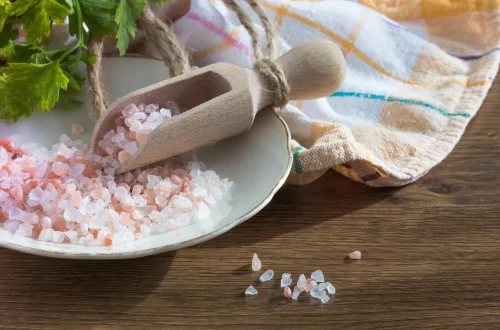
Effective Methods to Get Rid of Flat Moles on Your Face
Flat moles, also known as nevi, are common skin features that many people have. These benign growths can appear on various parts of the body, but when they appear on the face, they can become a cosmetic concern for some individuals. The presence of flat moles on the face can lead to feelings of self-consciousness, prompting individuals to seek ways to minimize their appearance. While most flat moles are harmless, there are several methods available to manage or remove them, ranging from natural remedies to medical procedures. Understanding the different approaches can help individuals make informed choices about their skin care and aesthetic preferences. However, it’s essential to be cautious and informed about the methods one chooses, as some can have risks and side effects. This article explores various effective techniques to address flat moles on the face, offering insights into both home remedies and professional treatments.
Natural Remedies for Reducing Flat Moles
Natural remedies have gained popularity due to their accessibility and perceived safety. Many people prefer to explore these methods before considering more invasive procedures. One common approach involves the use of essential oils, such as tea tree oil or frankincense oil. These oils are known for their antimicrobial and anti-inflammatory properties. To use this method, individuals can dilute a few drops of essential oil with a carrier oil, such as coconut or olive oil, and apply the mixture directly to the mole. Regular application, typically once or twice daily, may help lighten the mole’s appearance over time.
Another natural remedy involves apple cider vinegar, which is often touted for its skin benefits. It contains acetic acid, which can help exfoliate the skin and potentially reduce the visibility of flat moles. To use apple cider vinegar, one can soak a cotton ball in the vinegar and secure it on the mole with a bandage for several hours. This process may need to be repeated daily for a couple of weeks to observe any changes. However, caution is advised, as prolonged exposure can irritate the surrounding skin.
Garlic is another household item that many believe can aid in mole reduction. It contains enzymes that may help break down the cells in the mole. To use garlic, one can crush a clove and apply the paste directly onto the mole, covering it with a bandage. This should be done for a few hours each day. As with other natural remedies, results can vary, and not everyone may experience the desired effect.
It’s important to note that while these natural remedies may work for some, they are not universally effective and should be approached with realistic expectations. Furthermore, individuals with sensitive skin should perform a patch test before applying any remedy extensively to avoid adverse reactions.
Over-the-Counter Treatments and Products
For those seeking more immediate results, over-the-counter treatments offer a convenient alternative to natural remedies. Many cosmetic products are designed specifically to address skin imperfections, including flat moles. These products often contain active ingredients such as hydroquinone, salicylic acid, or glycolic acid, which can help exfoliate the skin or lighten hyperpigmentation.
Hydroquinone is a skin-lightening agent that can diminish the appearance of dark spots and moles. It is available in various concentrations, and those interested should follow the instructions carefully to avoid overuse, which can lead to skin irritation. Similarly, salicylic acid is often used in acne treatments but can also be effective in reducing the appearance of moles by promoting cell turnover and exfoliation.
Another option is products that contain alpha hydroxy acids (AHAs), which help to exfoliate the skin and can gradually lighten moles. Regular use of these products can lead to a smoother skin texture and a more even skin tone. However, it’s crucial to apply sunscreen during the day when using these treatments, as they can increase skin sensitivity to the sun.
While over-the-counter products can be effective, it’s essential to read labels and choose products that are suitable for your skin type. Individuals with sensitive skin may want to consult a dermatologist before starting any new treatment to avoid irritation or adverse reactions.
Professional Removal Options
For those who prefer a more definitive solution, professional removal options are available through dermatologists and cosmetic surgeons. These methods are typically safe and effective, providing quicker and more noticeable results compared to at-home remedies or over-the-counter treatments.
One common procedure is excisional surgery, where the mole is surgically removed along with a small margin of the surrounding skin. This method is often employed for larger moles or those that require biopsy for further examination. The procedure is usually performed under local anesthesia, and while there may be some discomfort during recovery, it generally yields positive cosmetic results.
Another option is laser therapy, which uses concentrated light beams to target and break down the pigment in the mole. This method is less invasive and typically requires minimal downtime, making it an attractive choice for those looking for quicker recovery. Multiple sessions may be necessary, depending on the size and depth of the mole.
Cryotherapy is another professional treatment that involves freezing the mole with liquid nitrogen. This causes the mole to peel away over time. While effective for many, it may not be suitable for all types of moles, so a consultation with a dermatologist is recommended to determine the best approach.
It’s vital to consult with a qualified medical professional before undergoing any removal procedure. They can provide guidance on the most appropriate method based on individual skin type and the characteristics of the mole. Additionally, professional evaluation ensures that any suspicious moles are thoroughly assessed for potential health risks.
Consultation and Safety Considerations
When dealing with flat moles on the face, safety should always be a top priority. Consulting with a dermatologist is crucial before trying any removal method, whether natural or professional. A dermatologist can assess the mole’s characteristics, ensuring that it is benign and not a cause for concern. This step is vital, as some moles may appear harmless but could indicate underlying health issues.
Furthermore, individuals should be aware of potential side effects and risks associated with various treatments. Natural remedies, while appealing, can cause skin irritation or allergic reactions. Over-the-counter products may lead to dryness or peeling if not used correctly. Professional treatments, while generally safe, carry risks of scarring or infection.
For those considering professional removal methods, it’s essential to choose a qualified and experienced practitioner. Researching credentials, reading reviews, and discussing concerns during the consultation can help ensure a positive experience.
In conclusion, while there are numerous methods to address flat moles on the face, each option comes with its own set of considerations. It’s essential to approach the topic with care, prioritize safety, and seek professional guidance when necessary.
*This article is not intended as medical advice. For any health concerns, please consult a qualified healthcare professional.*




